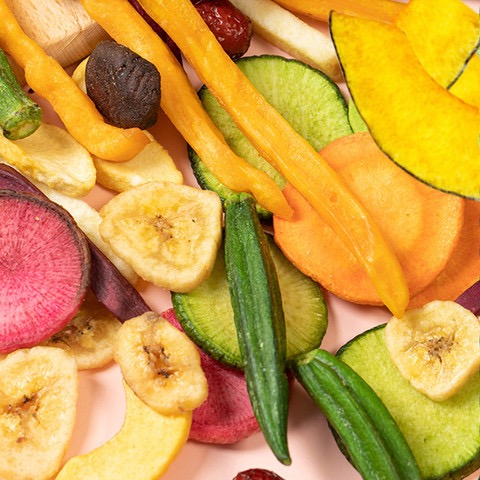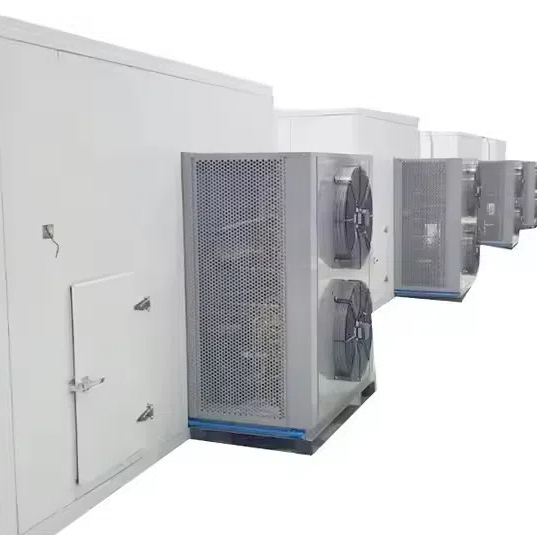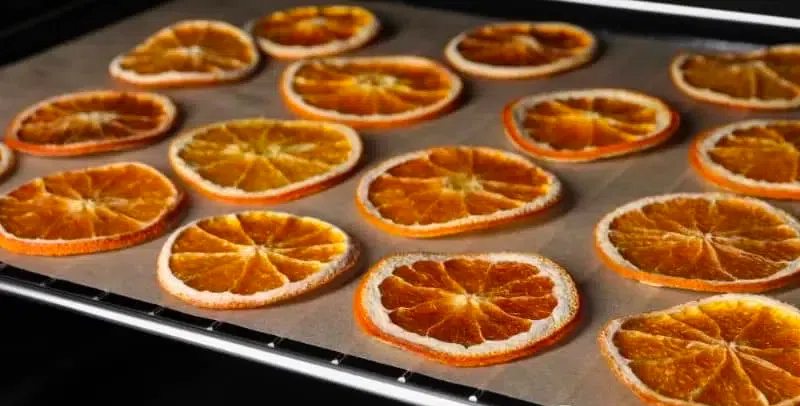
Content Menu
● What is a Food Dehydrator?
● How Does a Food Dehydrator Work?
● Benefits of Using a Food Dehydrator
● Common Foods to Dehydrate
● How to Use a Food Dehydrator
● Tips for Successful Dehydration
● Uses of Dried Foods
● Nutritional Benefits of Commonly Dried Foods
● Safety Tips When Using a Food Dehydrator
● Dehydration vs Other Preservation Methods
● Conclusion
● FAQs
>> 1. How do you clean a food dehydrator?
>> 2. Can you dehydrate cooked foods?
>> 3. What foods should not be dehydrated?
>> 4. How long do dehydrated foods last?
>> 5. Can I use my oven instead of a dehydrator?
● Citations:
Food dehydrators have become increasingly popular in kitchens around the world, especially among health-conscious individuals and those looking to preserve food effectively. This article explores the myriad reasons why using a food dehydrator can be beneficial, focusing on the process, advantages, and practical applications of dehydrating food.

What is a Food Dehydrator?
A food dehydrator is an electric appliance designed to remove moisture from food items. By circulating warm air at low temperatures, it effectively dries fruits, vegetables, herbs, and even meats without cooking them. This process not only extends the shelf life of foods but also retains their nutritional value.
How Does a Food Dehydrator Work?
The basic operation of a food dehydrator involves:
- Air Circulation: Most dehydrators use a fan to circulate warm air around the food placed on multiple trays. This airflow helps to evaporate moisture quickly.
- Temperature Control: Dehydrators typically allow users to set specific temperatures depending on the type of food being dried. For example:
- Fruits are usually dehydrated at 135°F (57°C).
- Vegetables require about 125°F (52°C).
- Herbs can be dried at lower temperatures around 95°F (35°C) to preserve their delicate flavors.
- Moisture Removal: As moisture is removed from the food, it prevents the growth of bacteria, yeast, and mold, thereby extending its shelf life significantly.
Benefits of Using a Food Dehydrator
1. Preservation of Nutrients: Dehydrating food retains more vitamins and minerals compared to other preservation methods like canning or freezing. Studies show that dehydration results in only a 3-5% nutrient loss, while freezing can cause up to 40-60% loss.
2. Cost-Effective: By purchasing fruits and vegetables in bulk when they are in season and dehydrating them, you can save money and reduce waste. Dried foods are lightweight and easy to store.
3. Healthy Snacking: Homemade dehydrated snacks are free from additives and preservatives often found in store-bought options. You can control the ingredients and avoid unhealthy fats or sugars.
4. Versatility: A dehydrator can be used for various foods beyond fruits and vegetables. You can make jerky from lean meats, create fruit leathers, or dry herbs for seasoning.
5. Convenience for Outdoor Activities: Dehydrated foods are perfect for camping or hiking as they are lightweight and require no refrigeration. They can easily be rehydrated with water when needed.
6. Reduction of Food Waste: Dehydrators allow you to utilize surplus produce that might otherwise spoil. For instance, if you have leftover herbs or fruits that are nearing their expiration date, dehydrating them prevents waste and provides ingredients for future meals.
7. Flavor Enhancement: Dehydration concentrates flavors in foods, making them taste more intense. For example, sun-dried tomatoes have a richer flavor than fresh tomatoes due to the dehydration process.
8. Easy Meal Prep: Dehydrated foods can be easily incorporated into meal planning. You can prepare meals in advance by dehydrating ingredients like diced vegetables or cooked grains, which can then be rehydrated when needed.
9. Storage Efficiency: Dried foods take up significantly less space than their fresh counterparts. This makes them ideal for small kitchens or for individuals looking to maximize pantry space.
10. Sustainable Living: By drying your own food, you contribute to sustainable living practices by reducing reliance on store-bought products that often come with excessive packaging.

Common Foods to Dehydrate
- Fruits: Apples, bananas, strawberries, mangoes
- Vegetables: Tomatoes, carrots, bell peppers
- Meats: Beef jerky from lean cuts
- Herbs: Basil, parsley, thyme
How to Use a Food Dehydrator
Using a food dehydrator is straightforward:
1. Preparation: Wash and slice your food into uniform pieces for even drying.
2. Loading Trays: Place the food on the dehydrator trays without overlapping them.
3. Setting Temperature and Time: Adjust the temperature according to the type of food being dried and set a timer.
4. Monitoring Progress: Check periodically to ensure even drying; rotate trays if necessary.
5. Storage: Once fully dried, store your foods in airtight containers to maintain freshness.
Tips for Successful Dehydration
- Blanching Vegetables: Some vegetables benefit from blanching before dehydration as it helps preserve color and flavor while also reducing drying time.
- Using Citric Acid for Fruits: To prevent browning in fruits like apples or pears, soak them in a solution of water mixed with lemon juice or citric acid before dehydration.
- Avoid Overloading Trays: Ensure that air can circulate freely around each piece of food; overcrowding will lead to uneven drying.
- Experiment with Seasoning: Before dehydrating meats or vegetables, consider marinating them or adding spices for enhanced flavor profiles.
Uses of Dried Foods
Dried foods are not just snacks; they have diverse culinary applications:
- Soups & Stews: Dried vegetables can easily be reconstituted in soups or stews.
- Baking Ingredients: Dried fruits like raisins or cranberries add texture and flavor to baked goods such as muffins and breads.
- Trail Mixes: Combine dried fruits with nuts and seeds for nutritious trail mixes perfect for on-the-go snacking.
- Cereals & Granola Bars: Incorporate dried fruits into homemade granola bars or cereals for added sweetness without refined sugars.
Nutritional Benefits of Commonly Dried Foods
Understanding the nutritional profiles of commonly dried foods enhances their appeal:
- Dried Fruits:
- High in fiber which aids digestion.
- Rich in antioxidants that combat oxidative stress.
- Dried Vegetables:
- Retain vitamins A and C which support immune function.
- Jerky (Dried Meat):
- Excellent source of protein; ideal for muscle repair post-exercise.
Safety Tips When Using a Food Dehydrator
To ensure safe dehydration practices:
1. Always use fresh produce free from blemishes or mold.
2. Store dried foods in cool dark places; heat accelerates spoilage.
3. Label containers with dates so you know when they were prepared.
4. Use oxygen absorbers if storing large quantities long-term to prevent spoilage.
Dehydration vs Other Preservation Methods
When comparing dehydration with other preservation methods such as freezing or canning, several factors come into play:
| Method | Nutritional Retention | Shelf Life | Preparation Time | Storage Space |
| Dehydration | High (3-5% loss) | Up to 5 years | Moderate | Low |
| Freezing | Moderate (40-60% loss) | 6 months - 1 year | Quick | Moderate |
| Canning | Variable | 1 - 2 years | Long | Moderate |
Conclusion
Using a food dehydrator offers numerous benefits that cater to health-conscious individuals and those looking to minimize waste while maximizing flavor and nutrition in their diets. With its ability to preserve foods for extended periods without losing essential nutrients or flavor, it serves as an invaluable tool in modern kitchens.
Investing in a quality food dehydrator not only enhances your culinary repertoire but also supports sustainable practices by allowing you to make the most out of seasonal produce and reduce food waste effectively.

FAQs
1. How do you clean a food dehydrator?
Cleaning a food dehydrator typically involves removing all trays and washing them with warm soapy water or placing them in the dishwasher if they are dishwasher-safe.
2. Can you dehydrate cooked foods?
Yes, you can dehydrate cooked meals like soups or stews after ensuring they are cooled down sufficiently before placing them in the dehydrator.
3. What foods should not be dehydrated?
Foods high in fat or oil should generally not be dehydrated as they can go rancid; this includes items like avocados or peanut butter.
4. How long do dehydrated foods last?
When stored properly in airtight containers away from light and moisture, most dehydrated foods can last up to five years.
5. Can I use my oven instead of a dehydrator?
While you can use an oven at low temperatures to dehydrate foods, it is less efficient than a dedicated dehydrator due to uneven heat distribution and higher energy consumption.
Citations:
[1] https://www.bestbuy.com/discover-learn/10-reasons-to-buy-a-food-dehydrator/pcmcat1634332391134
[2] https://www.webmd.com/diet/dehydrating-food-good-for-you
[3] https://www.mitchellcooper.co.uk/what-is-a-dehydrator-commercial-buying-guide
[4] https://www.freepik.com/photos/food-dehydrator
[5] https://www.youtube.com/watch?v=mtDzdYoyeR8
[6] https://www.youtube.com/watch?v=lEUA2t2XD5M
[7] https://www.youtube.com/watch?v=8HC8hu5aa14
[8] https://www.seriouseats.com/food-dehydrator-to-reduce-food-waste-7105642
[9] https://www.webstaurantstore.com/guide/741/food-dehydrators-buying-guide.html
[10] https://www.youtube.com/watch?v=rR2G5UO-5Ms
[11] https://www.everythingkitchens.com/media/manual/7100.pdf
[12] https://eatsleepwild.com/homemade-dehydrated-backpacking-meals/
[13] https://www.backpackingchef.com/dehydrating-food.html
[14] https://www.goodhousekeeping.com/appliances/a31904157/what-is-a-dehydrator/
[15] https://www.theseasonalhomestead.com/9-benefits-of-dehydrating-food-that-may-surprise-you/
[16] https://www.youtube.com/watch?v=lEUA2t2XD5M
[17] https://www.commercialdehydrators.com.au/dehydrating-recipes-filters
[18] https://www.youtube.com/watch?v=LerlxsDYxe0
[19] https://brodandtaylor.com/pages/dehydrating
[20] https://www.healthline.com/nutrition/dehydrated-food
[21] https://www.freshoffthegrid.com/dehydrating-food/
[22] https://www.backpackingchef.com/food-dehydrator-recipes.html
[23] https://homesteadingfamily.com/preservation-101-intro-to-dehydrating-food/
[24] https://www.consumer.org.nz/articles/food-dehydrator-vs-fan-oven
[25] https://cdn.shopify.com/s/files/1/0382/1836/7107/files/Sahara-Explore_parallax.jpg?v=1709063571&sa=X&ved=2ahUKEwje9YfQ7OyKAxXlUkEAHaDfIBkQ_B16BAgNEAI
[26] https://learn.eartheasy.com/guides/a-beginners-guide-to-dehydrating-food/
[27] https://www.reddit.com/r/Cooking/comments/pbck40/dehydrator_recipes_that_arent_jerky_or_dried_fruit/
[28] https://www.mitchellcooper.co.uk/media/wysiwyg/excalibur-dehydrator.webp?sa=X&ved=2ahUKEwjd5rOq8OyKAxVAGFkFHcASL8oQ_B16BAgNEAI
[29] https://www.nisbets.co.uk/benefitsofafooddehydrator
[30] https://www.allrecipes.com/article/how-to-use-a-food-dehydrator/
[31] https://www.sunbeam.com.au/recipes/dehydrator-recipes
[32] https://www.pinterest.com/tribestlife/dehydrator-recipes/
[33] https://www.youtube.com/watch?v=rXNIHzcE8F0
[34] https://www.istockphoto.com/de/bot-wall?returnUrl=%2Fde%2Fphotos%2Fdehydrator
[35] https://www.youtube.com/watch?v=Zl4wTcCPJu0
[36] https://www.facebook.com/Clarasconfectioneryng/videos/how-to-use-a-food-dehydratorfood-dehydrators-are-still-available-in-various-size/410620696266909/?locale=zh_CN
[37] https://www.youtube.com/watch?v=iGVUpeTAdKM
[38] https://www.istockphoto.com/de/bot-wall?returnUrl=%2Fde%2Fphotos%2Ffood-dehydrator
[39] https://www.youtube.com/watch?v=JRArvU4PDVc
[40] https://www.youtube.com/watch?v=KsXfxFt9KRc
[41] https://stock.adobe.com/search?k=dehydrator
[42] https://www.youtube.com/watch?v=9DSGcVhjHEc
[43] https://www.rawliving.co.uk/products/how-to-use-a-dehydrator-with-recipes-video
[44] https://www.pinterest.com/smallkitchenap2/dehydrators/
[45] https://www.youtube.com/watch?v=cXtcaozMLfw
[46] https://www.rawblend.com.au/video-demonstrations-tommy/sedona-dehydrator-videos/
[47] https://www.youtube.com/playlist?list=PL71uE0jHe7onrQE-Q4rCTbbDOkRVl7cQu
[48] https://www.tiktok.com/@freshoffthegrid/video/7063481870511787310
[49] https://www.facebook.com/dazzlehub37/videos/bosch-food-dehydratorfood-dehydrator-is-used-to-remove-moisture-from-food-restra/324682949057873/
[50] https://www.callmelore.com/fool-proof-healthy-dehydrator-recipes/
[51] https://www.cnet.com/pictures/tips-for-using-your-new-dehydrator/
[52] https://www.freepik.com/free-photos-vectors/food-dehydrator
[53] https://www.youtube.com/watch?v=bZSF-9DrJ0o











